Essential Information About Trabzon
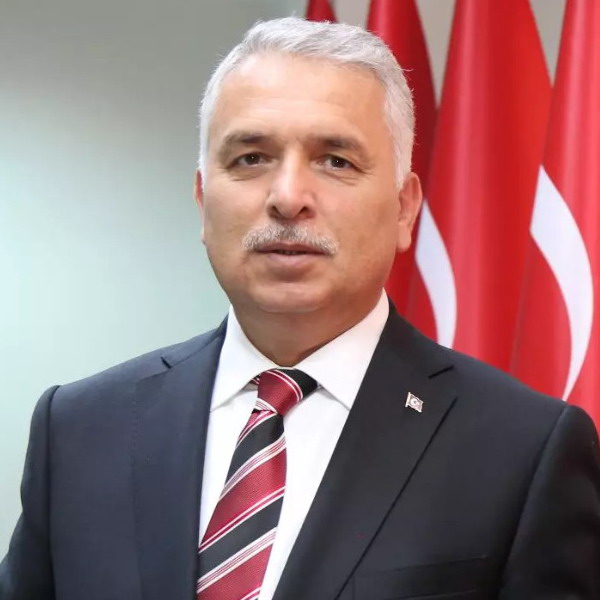
Governor
Aziz YILDIRIM

Metropolitan Mayor
Ahmet Metin GENÇ
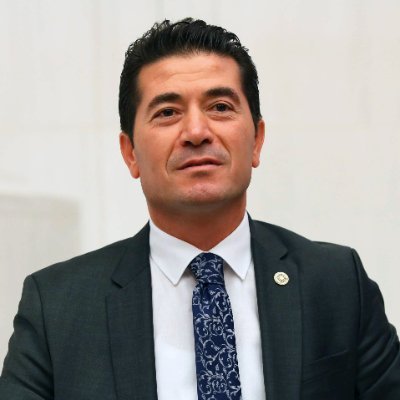
Ortahisar Mayor
Ahmet KAYA

Chief Constable
Ali LOĞOĞLU
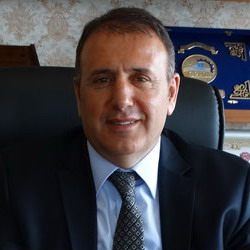
President of the Chamber of
Commerce and Industry
Erkut ÇELEBİ

Rector of Karadeniz Technical University
Prof.Dr.Hamdullah ÇUVALCI
- GENERAL INFORMATION
- DISTRICTS
- SISTER CITIES
- HISTORY
- CLIMATE
- ECONOMY
- TRADE and INDUSTRY
- EDUCATION AND CULTURE
- GEOGRAPHICAL SITUATION
- HEALTH
Trabzon is,
62nd in terms of area,
23rd in terms of population,
5th in terms of population density,
59th in terms of population growth rate
among the 81 provinces.
37% of the population is under 25, 52% is 25-65 years old, 11% is over 65 years old.
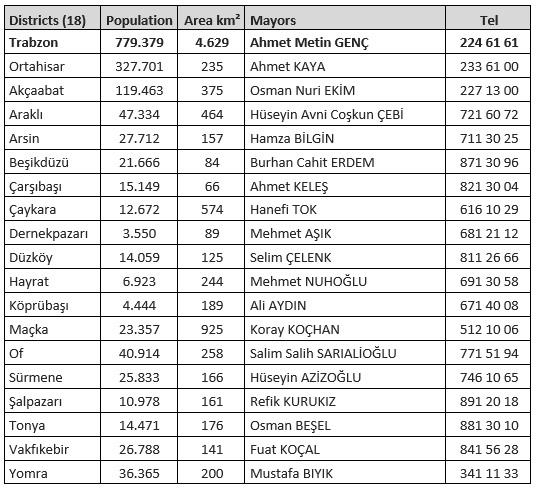
Szigetvar, Hungary (1998)
Kahramanmaraş, Turkiye (2006)
Sochi, Russia (1993)
Dortmund, Germany (2013)
Rizhao, China (1997)
Travnik, Bosnia and Herzegovina (2005)
Chicago, USA (1998)
Rasht, Iran (2000)
Batum, Georgia (2000)
Zanjan, Iran (2001)
The foundation of Trabzon goes back to 2000 BC. It is included in the history books that the first founders of the city of Trabzon, which was established at the beginning of the historical Silk Road, were Mars, Tibarens and Mosques from the Turani Tribes who came to the region from Central Asia and the Caucasus.
Cycle I: Establishment of the city (2000 BC – 750 BC)
 This era is a dark age. The ruins inform us that for the first time, Mosques, Tibaren and Mars from Caucasia came to this region and engaged in agriculture and fishing.
This era is a dark age. The ruins inform us that for the first time, Mosques, Tibaren and Mars from Caucasia came to this region and engaged in agriculture and fishing.
Cycle II: Free City Period (750 BC – 50 AD)
In this period, people of Miletus came to Trabzon from Sinop in 756 BC. These collimators, the best sailors and merchants of their time, are originally from the city of Miletus, one of the most important centers of Ionia.
29 years after they conquered Sinop, people of Miletus, together with Ordu and Giresun, came to Trabzon, which existed before them, and settled in an unknown way.
The first person to mention the city is the Greek commander and philosopher Ksenefon who came to Trabzon with an army of eight thousand people, which was the balance of tens of thousands in 400 BC. The city paid a certain tax to Sinop in his time.
People of Miletus have made great fortunes in Trabzon, where the shopping movements flowing through the trade routes from Trabzon to the center of Asia and the Middle East were connected and dissolved. They had left their center Sinop, behind in every field. The ships of hundreds of pieces were transporting incoming and outgoing trade commodities to all parts of the Black Sea and across the straits to the Aegean shores.
Cycle III: Pagan Romans Period (50-1204)
After the Pontus Emperor Mithridates lost a series of wars with the Roman Empire, Trabzon came under Roman rule as well as Anatolia. The Romans gave Trabzon the title and privilege of "Free City", as they did to other Greek colonies. Trabzon had become a base and food center for the Romans in the east. Sinop, the center of Greek colonies in the Black Sea, lost its importance at the beginning of the Roman period. Trabzon, on the other hand, gained strength and became the busiest pier and the liveliest trade center of the Black Sea.
The Romans paid special attention to Trabzon due to its location. Roman Emperor Adrian M. S. had built a harbor in the first century by carving under the rocks that extend towards the sea in the present Kalepark. This port, called Bella Castron port in Latin, had a very important place in Europe-Asia and Middle East trade. Transit commodities coming from inside or from the sea were discharged from camels and ships to this warehouse, which was surrounded by a wall right above the port, which was a public store for the time, and even the commodities that would go inwards or to the provinces were loaded from there. This place was a free zone in its current meaning, established on the sea end of the historical silk road from Europe to the middle of Asia.
The city, which was restored during the reign of the Roman Emperor Hadrian, became the capital of the Pontus Cappadocia state during the Trajan period and a new port was built. It was plundered by the Goths, which was a Germanic tribe during the Gallian period, and regained its former position by being repaired in the Justinian period.
Cycle IV: Kingdom of Komnenos Period (1204-1461)
After the Byzantine Empire fell into the hands of the Latins who came with the 4th Crusades in 1204, the grandsons of the emperor 1st Andronikos Komnenos, who escaped from Istanbul, Alexios and David, with the help of the Georgian Queen Tamara, independently established the Trabzon Empire in 1204.
 Alexios I, who was 22 years old when he founded the Trabzon Empire, described himself as "Roman Emperor" here. The brother of Alexios, who was the commander-in-chief of the Trabzon Army, attacked Paphlagonia with his army of Laz and Georgians, thus the land between BlackSea Eregli and Sinop also joined the Trabzon lands. Alex, who strengthened the defense of the Trabzon Empire and enriched the Trabzon trade, died in 1222 at the age of 40, after ruling for 18 years.
Alexios I, who was 22 years old when he founded the Trabzon Empire, described himself as "Roman Emperor" here. The brother of Alexios, who was the commander-in-chief of the Trabzon Army, attacked Paphlagonia with his army of Laz and Georgians, thus the land between BlackSea Eregli and Sinop also joined the Trabzon lands. Alex, who strengthened the defense of the Trabzon Empire and enriched the Trabzon trade, died in 1222 at the age of 40, after ruling for 18 years.
Andronik, who took the throne after Alexios I, experienced violent clashes with the Seljuks. Andronik built columns in honor of his victories and minted gold coins in his name.
Following the reign of Andronic, John I took over, followed by Manuel I. Manuel I had good relations with the Mongols, and Trabzon continued to maintain its commercial importance. Trabzon Hagia Sophia Church was built during his time.
The Trabzon Empire had its brightest period during the Alex II period. Turkmens who tried to infiltrate Giresun during his period were expelled from these regions. By increasing the defense of the empire, he created security forces to patrol day and night.
During the reign of the Andronic III, who ascended the throne after Alex II, there was a civil war for the first time and a rebellion under the leadership of Grand Duke John. The reason for this is that Andronik had his brothers killed as soon as he came to the throne. The people did not welcome this and instead of banning his descendants from the throne, Georgian leader Basil Komnene was enthroned.
When Basil's murder of the local lords was added to the environment, which the public did not like, the people rebelled against the emperor in an eclipse. Later, his first wife, who poisoned Basil, was seated on the throne of Trabzon. However, when he expelled his second wife, Irene from Trabzon, whom Basil left her, a civil war broke out again. II. Alex's daughter Anna seized the throne of Trabzon with the help of local soldiers and sent the Queen of Istanbul back to Istanbul. Anna's accession to the throne meant the empowerment of the natives and the loss of Rome's influence in the region. Coming to Trabzon with Genoese ships, John III took power by strangling the Empress Anna.
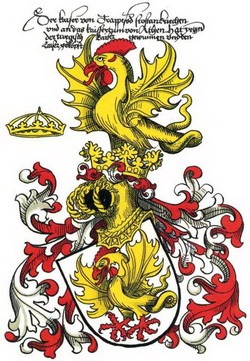 The Trabzon Empire was shaken by a great plague epidemic in the 1340s. All internal disturbances, plague epidemic, earthquakes, conflicts with Italians and Turkmens weakened the Empire of Trabzon and the occupation of Timur, who was called "disaster" in Panaret Chronicle, took place.
The Trabzon Empire was shaken by a great plague epidemic in the 1340s. All internal disturbances, plague epidemic, earthquakes, conflicts with Italians and Turkmens weakened the Empire of Trabzon and the occupation of Timur, who was called "disaster" in Panaret Chronicle, took place.
At the beginning of the 15th century, the Ottoman Empire and the Trabzon Empire became border neighbors. In the same period, Turkmens also entered Giresun. Although Trabzon was first besieged by the Ottomans in the 1440s, it could not be taken. Afterwards, the Turkmens under the leadership of Seyh Cuneyd had to withdraw even though they besieged Trabzon.
Although the emperors of Trabzon initially used the double-headed (aetos) figure as a symbol like other Byzantine (Eastern Roman) emperors, with the end of the Latin occupation and the re-legal administration in Constantinople, in order not to cause a conflict, they preferred a single headed eagle symbol which has a relief above the entrance door of the Trabzon Hagia Sophia Museum today.
Cycle V: Ottoman Empire (1461-1918)
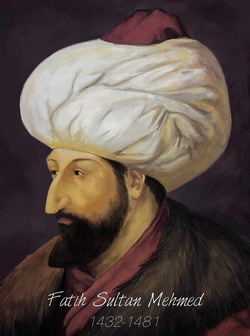 After Bayezid I conquered Samsun region in 1398, Trabzon Komnenos Kingdom was obliged to pay annual tax to the Ottoman State. During his reign (1458-1461), David Komnenos stopped paying taxes and asked back what he paid for before, through the Akkoyunlu State Sultan Uzun Hasan, and made an alliance proposal to the great states in Europe against the Ottomans. Thereupon, the Ottoman Forces led by Mehmet the Conqueror besieged the region and captured Trabzon in 1461 and ended the domination of the Komnenos. Trabzon was governed by princes and governors as a state and sanjak in the Ottoman Period. The first starboard was Hizir Bey. In 1470, the sanjak principality was given to Prince Abdullah at a young age; Abdullah lived in Trabzon with his mother Şirin Hatun until 1479. Yavuz Sultan Selim was also found in Trabzon as Sancak Governor during his princehood (1491-1512), and his son Sultan Süleyman, who would later receive the title of Kanuni, was born here. In the 16th century, Trabzon was transformed into a province by merging with the Lazistan Sanjak, whose center was Batumi, and became the center of this new administrative unit. The Caucasus-Russian war in the North Caucasus between 1859-1864 resulted in the defeat of the Circassian and Abaza people, and resulted in a concentration of more than 360 thousand immigrants in the city. Migration, which naturally turned into a great disaster, led to epidemics, hunger and social cohesion. In a very short time, Trabzon and Akçakale ports and surrounding settlements have turned into reservations. During this period, the local people who fled from epidemic diseases moved to the highlands and there were only new immigrants and government officials in the city. In 1867, a big fire broke out in Trabzon, many public buildings were burned down at this time and the city was reorganized later. It became a province in 1868, and the Sancaks of Lazistan, Gümüşhane, and Canik were also attached here, as well as the central sanjak. During the First World War, the Russians attacked Trabzon (14 April 1916). Striking forces (Militia), consisting of the people of Trabzon, fought guerrilla warfare during this attack. Meanwhile, the ammunition that came to Trabzon Port with the support of the Hamidiye Armored Battleship to be sent to the front was emptied with great excitement by the young people of Trabzon and moved to Maçka.
After Bayezid I conquered Samsun region in 1398, Trabzon Komnenos Kingdom was obliged to pay annual tax to the Ottoman State. During his reign (1458-1461), David Komnenos stopped paying taxes and asked back what he paid for before, through the Akkoyunlu State Sultan Uzun Hasan, and made an alliance proposal to the great states in Europe against the Ottomans. Thereupon, the Ottoman Forces led by Mehmet the Conqueror besieged the region and captured Trabzon in 1461 and ended the domination of the Komnenos. Trabzon was governed by princes and governors as a state and sanjak in the Ottoman Period. The first starboard was Hizir Bey. In 1470, the sanjak principality was given to Prince Abdullah at a young age; Abdullah lived in Trabzon with his mother Şirin Hatun until 1479. Yavuz Sultan Selim was also found in Trabzon as Sancak Governor during his princehood (1491-1512), and his son Sultan Süleyman, who would later receive the title of Kanuni, was born here. In the 16th century, Trabzon was transformed into a province by merging with the Lazistan Sanjak, whose center was Batumi, and became the center of this new administrative unit. The Caucasus-Russian war in the North Caucasus between 1859-1864 resulted in the defeat of the Circassian and Abaza people, and resulted in a concentration of more than 360 thousand immigrants in the city. Migration, which naturally turned into a great disaster, led to epidemics, hunger and social cohesion. In a very short time, Trabzon and Akçakale ports and surrounding settlements have turned into reservations. During this period, the local people who fled from epidemic diseases moved to the highlands and there were only new immigrants and government officials in the city. In 1867, a big fire broke out in Trabzon, many public buildings were burned down at this time and the city was reorganized later. It became a province in 1868, and the Sancaks of Lazistan, Gümüşhane, and Canik were also attached here, as well as the central sanjak. During the First World War, the Russians attacked Trabzon (14 April 1916). Striking forces (Militia), consisting of the people of Trabzon, fought guerrilla warfare during this attack. Meanwhile, the ammunition that came to Trabzon Port with the support of the Hamidiye Armored Battleship to be sent to the front was emptied with great excitement by the young people of Trabzon and moved to Maçka.
Successful battles were fought against the Russians in Sultan Murat Plateau in Çaykara (10 June 1916), Baltacı in Of, Yanbolu in Arsin, but under the conditions of those years, the enemy could not be prevented from entering Trabzon and the Russians entered Trabzon on April 14, 1916. During the one year, ten months and ten days of the Russians’ stay in Trabzon, especially Greeks and Armenians tortured the local people; countless people have been killed.
In 1917, the "Bolshevik Revolution" occurred in Russia, the Tsarist Administration collapsed. Thereupon, a great panic began in the Russian Army. This alsa caused the Russians to withdraw from Trabzon. On the other hand, the Turkish gangs, sliding from west to east, gathered in Montenegro, descended to Akçaabat and marched towards Trabzon on three branches under the command of Captain Kahraman Bey and entered Trabzon on 24 February 1918.
Cycle VI: Republic of Turkiye
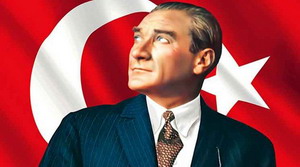 After the collapse of the Ottoman Empire, Mustafa Kemal Ataturk and colleagues founded the Republic of Turkey, with the new Turkish state and Trabzon has taken its place in the new administrative structure of the new country as the number 61 province. The boundaries of the province in the Republican period were drawn not with a cultural and historical idea, but on the basis of the administrative structure and the distances to the centers. Various factories were established in Trabzon after the proclamation of the Republic. During the Republic period, Atatürk came to Trabzon three times in 1924, 1930 and 1937. The first day of his arrival on September 15, 1924 is considered as "ATATÜRK DAY" by the people of Trabzon.
After the collapse of the Ottoman Empire, Mustafa Kemal Ataturk and colleagues founded the Republic of Turkey, with the new Turkish state and Trabzon has taken its place in the new administrative structure of the new country as the number 61 province. The boundaries of the province in the Republican period were drawn not with a cultural and historical idea, but on the basis of the administrative structure and the distances to the centers. Various factories were established in Trabzon after the proclamation of the Republic. During the Republic period, Atatürk came to Trabzon three times in 1924, 1930 and 1937. The first day of his arrival on September 15, 1924 is considered as "ATATÜRK DAY" by the people of Trabzon.
Trabzon climate is hot in summer and normal cold in winter. Spring months are usually rainy and foggy. Trabzon has a humid climate and its humidity reaches up to 99% from time to time.
Annual average rainfall is 800-850 kg/m². Rain rate increases towards the inner parts. The least rainy months are July and August and the most snow falls in February.
It can be said that the climate is warm and mild. As you go inwards from the beach, it is seen that the air is better and the water is cleaner.
In the city, which has a mild climate unique to the Black Sea, the air temperature changes between 7.4-23.5 °C throughout the year, while the summer average is around 22.3 °C and the winter average is around 4.4 °C.
The lowest temperature ever measured in Trabzon was -7 ° C (15 January 1950) and the highest temperature was 37.8 ° C (17 May 1988).

Although Trabzon has developed culturally and socially, it could not provide the desired economic development. The economy of the city is still related to agriculture and livestock. 65% of the population makes a living with the income obtained from these activities.
Those employed in trade, industry, handicrafts, transportation, construction and other services make up 35% of the population.
The labor force participation rate in Trabzon is 50.3%, the employment rate is 46.6%, and the unemployment rate is 7.4%. (Turkiye averages are 48.3%, 43.9% - 9%) According to 2012 data, there are 24.057 unemployed registered with ISKUR in Trabzon. 13.915 of them are men, and 10.142 of them are women. 13.9% of the unemployed are university graduates. Trabzon stands out as an education city with 60 thousand graduates given by its universities every year, thus it has a high and qualified workforce potential.
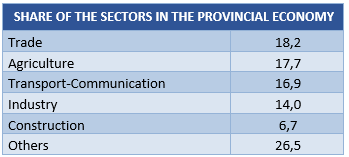
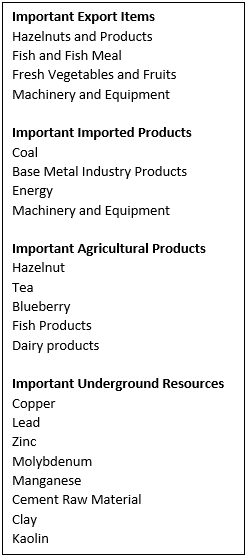

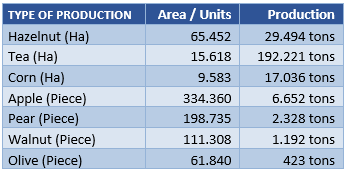
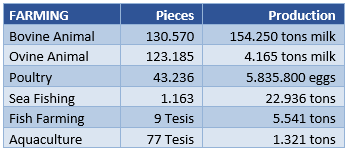
FOREIGN TRADE
The export in Trabzon in 2013 was 1.1 billion dollars. According to this amount, Trabzon is 1st out of 18 provinces of the Black Sea region, and 15th among all provinces in Turkiye. On the other hand, the total import of the province was realized as 223 million dollars. 62% of Trabzon's general export is "Agriculture, hunting and related service activities" and the weight of this situation is based on hazelnut exports. Fresh fruit and vegetable exports are in the second place with a share of 35%.
INDUSTRY
There are approximately 500 companies in Trabzon with Industrial Registration Certificate and 26% of these companies operate in the "Food and Beverages" sector, most of them under the title of hazelnut, tea and seafood sub-sectors. Companies manufacturing Construction Products are 17%.
28% of the companies are micro-scale, 60% small-scale, 10% medium-scale and 2% large-scale enterprises. Of the companies that have Industrial Registration Certificate, 35 have a Research and Development (R&D) Department and 108 have a Quality Control Department.
There are 4 Organized Industrial Zones in Trabzon, two of which are active (Arsin OIZ and Beşikdüzü OIZ), one during the establishment phase (Akçaabat Şinik OIZ) and the other at the expropriation and construction phase (Vakfıkebir OIZ). Arsin OIZ, which has 88 companies engaged in actual production, is the largest Organized Industrial Zone of the Eastern Black Sea Region with its 4200 employment, annual export of 305 million USD and high trade volume. While there are 18 companies in production in Beşikdüzü OIZ, the employment of the OIZ is 303 people and its annual export is 3 million USD. 48 parcels of Akçaabat Şinik OIZ have been allocated to 31 companies. There are 9 Small Industrial Sites in Trabzon where 845 enterprises operate and have an employment of approximately 3000 people.
LOGISTICS
With international highway connections and mountain passes, convenient transportation is provided to both neighboring countries and inner regions. Trabzon Airport which ranks 7th in Turkey in terms of the density of the domestic flights, also has an important position in Air cargo. The airport, which has more than 22 thousand flights and approximately 3 million passengers a year, has scheduled flights to Germany and Russia and direct flights to Saudi Arabia with charter flights. Trabzon Port, which is the largest port of the region, has a capacity of 10 million tons / year of handling, 5 million tons / year of storage and 2,300 ships per year. In addition, the port, which is of great importance in tourism, served a total of 20 thousand visitors with 32 cruise ships in 2013. Trabzon Free Zone within the port offers important opportunities to investors in the field of foreign trade.
EDUCATION
The literacy rate in Trabzon is 98.66% for men, 91.29% for women and 94.92% in general. There are 79,681 people in the province who have graduated from college, undergraduate or higher. Primary and secondary education enrollment rate is above the average of Turkey. While the average number of students per classroom in primary and secondary education in Turkey is 29, it is 23 in Trabzon. The total number of Preschool, Primary Education, General Secondary Education and Vocational-Technical Secondary Education institutions in Trabzon is 894, and the number of students studying in these schools is 139,152. In addition, there are 18 Public Education Centers in the province that contribute to the increase of qualified workforce. KTÜ (Karadeniz Technical University), the state university of the province, consists of 62 academic units, including 7 Institutes, 17 faculties, 11 Vocational Schools, 23 Research and Application Centers and 1 conservatory. In the 2011/2012 academic year, the total number of academicians in KTU reached 2,151, 299 of this number consists of Professors. Avrasya University, another university of the province, is the first foundation university in the Eastern Black Sea Region. In the 2011-2012 academic year at Eurasia University, the total number of academic staff, including 14 Professors, was 66. In addition, another state university, Trabzon University (TRU), which was established in Trabzon Akçaabat by leaving Karadeniz Technical University on May 8, 2018, is located in the region.
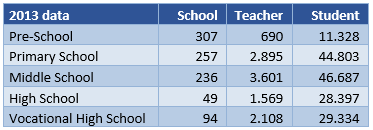
SOCIAL AND CULTURAL LIFE
There are 6 theaters, 68 cinemas, 4 museums, 198 libraries, 10 local newspapers and 3 shopping malls in Trabzon. Trabzon is a preferable province with its social and cultural opportunities. Especially having 3 shopping centers makes Trabzon an attraction center in the Eastern Black Sea Region.
Mountains : 78% of Trabzon's land consists of mountains and 22% of platos. Mountains extend in the south of the province and parallel to the coast. These mountains are in three blocks. These are;
Zigana Mountains, Trabzon Mountains and Soğan Mountains.
Plateaus : There are many plateaus on the platos at altitudes of 1750 - 2200 m. Major plateaus are;
Mescit Plateau, Sultan Murad Plateau, Asot and Resadiye Plateau, Fikonov Plateau, Beypinari Plateau, Macka Plateau, Sakaltutan Plateau and Derinoba Plateaus.
Rivers : There are many rivers in Trabzon territory.
The main ones are 35 km Degirmendere and 56 km Karadere. Others are short and fast flowing waters
Lakes : There are no big lakes in Trabzon. There are several small lakes. These are;
Uzun Lake : It is in Caykara. There is plenty of trout in the lake.
It is 1250 m high, 15 m deep, 1 km long, and 500 m wide.
Cakir Lake: It is a glacial bed lake located on the northern slope of Cakirgol Mountain. Trout lives in the lake.
It is 2533 m high, 20 m deep, 250 m long and 200 m wide.
Sera Lake : It was formed in 1950 when a mountain slope slides and closes a part of the Sera Creek Valley.
Its 40-50 m deep, 3 km long, and 200 m wide. Carp fish are produced in the lake.
UNDERGROUND SOURCES
Trabzon has a wide variety of mineral deposits in terms of metallic mines and industrial raw materials. The most important metallic minerals in the province are Copper, Lead, Zinc, Molybdenum and Manganese mineralization. According to the researches, 74 metallic mineral deposits and occurrences have been identified in the province. Important mineral deposits such as Copper-Lead-Zinc-Pyrite-Molybdenum are found in Maçka, Sürmene, Yomra and Of Districts. Important industrial raw materials in the province are; cement raw material, clay and kaolin. The province has a great potential in terms of quarries, which are mostly used as filling or industrial raw material supply source in the construction sector.
With 1 university hospital, 17 state hospitals, 3 private hospitals, health care facilities, infrastructure and personnel, Trabzon is one of Turkey's leading medical centers. Public, private and university hospitals provide services to both our citizens and patients from nearby geography and neighboring countries. While the number of beds per every 1000 people average of Turkiye is 2.65, it is 4.5 in Trabzon. While the number of doctors per every 1000 people of Turkiye is 2.3, it is 1.7 in Trabzon. In addition, Trabzon is among the top 10 cities in terms of the number of health tourists.
